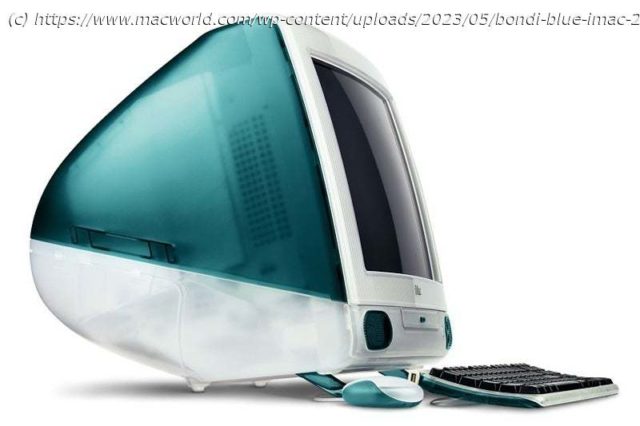Apple’s most iconic desktop computer.
Editor’s note: 25 years ago today, Apple revealed the iMac. To commemorate the anniversary, we are reposting this article that originally appeared on the iMac’s tenth anniversary in 2008.
The iMac made an instant impression when Apple first unveiled it in May 1998. But it didn’t start to really shake things up until it began to ship, which happened on August 15, 1998. Arguably the most influential desktop computer of the last decade, the original iMac’s specifications seem quaint by today’s standards. For $1,299, you came home with a 233MHz PowerPC G3 processor, 32MB of RAM, a 4GB hard drive, a 15-inch built-in monitor, and stereo speakers, all in an amazingly stylish case.
The Bondi Blue wonder heralded the return of Steve Jobs as a visionary leader for Apple, and it halted Apple’s mid-1990s financial freefall. Initially marketed as an easy-to-use gateway to the internet, the iMac transcended that simple role and redefined the desktop PC market–not to mention consumer industrial design–forever.
But have you ever wondered how? Here are eight ways the original iMac shook the world.The iMac killed beige
Before the iMac, personal computer enclosures were stuck in a design rut. Most manufacturers produced beige or gray metal boxes, each designed as a merely functional piece of equipment instead of an aesthetically pleasing creative tool. The iMac’s design shattered the status quo with its preference for gentle curves over harsh corners, and for vibrant color over dull neutrality. Apple even coined a new term, “Bondi Blue”–a blue-green hue named after Australia’s Bondi Beach shoreline–to describe the color of its new machine. Combined with an ice-white pinstripe pattern, the color scheme create a stunning enclosure theretofore unseen in the PC world. It made quite an impact on the public, but that was only the beginning.It hit us in the “i”
iThis, iThat—iPod, iPhone, iChat, iLife, iSight. Where did all those lowercase iPrefixes come from? You can thank the iMac for starting this ubiquitous Apple branding trend.
The “I” in “iMac” originally stood for “internet” (or alternately: “individual, instruct, inform, or inspire,” according to Steve Jobs’ introductory 1998 iMac slide show).






